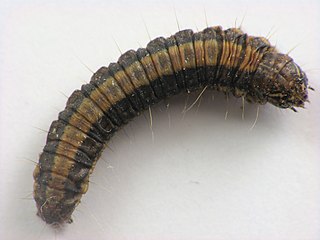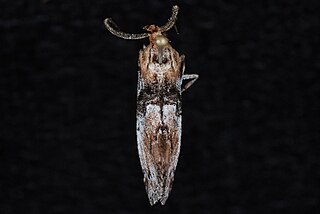Oreta is a genus of moths belonging to the subfamily Drepaninae. The genus was erected by Francis Walker in 1855.

The Epipaschiinae are a subfamily of snout moths. Almost 600 species are known today, which are found mainly in the tropics and subtropics. Some occur in temperate regions, but the subfamily is apparently completely absent from Europe, at least as native species. A few Epipaschiinae are crop pests that may occasionally become economically significant.

Oreta extensa is a species of moth of the family Drepanidae described by Francis Walker in 1855. It is found in China, Taiwan, India, Sri Lanka, Indonesia and Thailand.
Jocara athanasia is a species of snout moth in the genus Jocara. It is found in South America.
Jocara breviornatalis is a species of snout moth in the genus Jocara. It was described by Augustus Radcliffe Grote in 1877. It is found in the U.S. states of Texas, Oklahoma and Florida.
Jocara conspicualis is a species of snout moth in the genus Jocara. It was described by Julius Lederer in 1863, and is known from Brazil and Colombia.
Jocara fragilis is a species of snout moth in the genus Jocara. It was described by Francis Walker in 1863. It is found in the Dominican Republic.
Jocara malrubia is a species of snout moth in the genus Jocara. It is found in Brazil.
Jocara mava is a species of snout moth in the genus Jocara. It is found in South America.
Jocara oduvalda is a species of snout moth in the genus Jocara. It is found in South America.
Jocara pyropicta is a species of snout moth in the genus Jocara. It is found in Brazil.
Jocara rufitinctalis is a species of snout moth in the genus Jocara. It was described by George Hampson in 1906. It is found in Paraguay and Brazil.
Jocara subcurvalis is a species of snout moth in the genus Jocara. It is found in Costa Rica.
Jocara suiferens is a species of snout moth in the genus Jocara. It was described by Harrison Gray Dyar Jr. in 1913, and is known from Peru.

Jocara trabalis is a species of snout moth in the genus Jocara. It was described by Augustus Radcliffe Grote in 1881. It is found in North America, including Alabama, Arizona, British Columbia, California, Colorado, Nevada, New Mexico, Texas and Washington.
Jocara umbrosalis is a species of snout moth in the genus Jocara. It is found in Costa Rica.
Jocara yva is a species of snout moth in the genus Jocara. It is found in South America, including Bolivia.
Jocara zetila is a species of snout moth in the genus Jocara. It is found in Guatemala and Colombia.
Hypena extensa, is a moth of the family Erebidae first described by Francis Walker in 1866. It is found in India and Sri Lanka.




